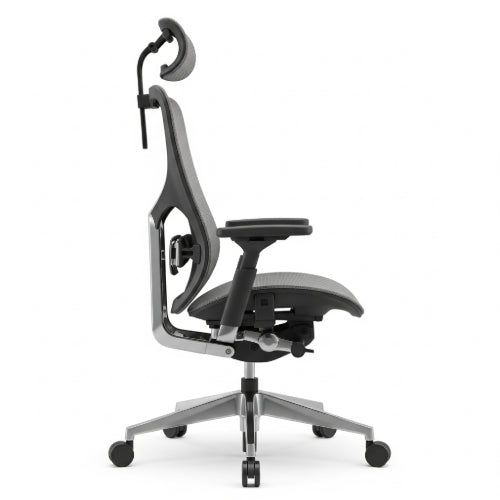The Ultimate Guide to Home Office Ergonomics: Chairs, Desks, and More
The shift to remote work has transformed the dining table or sofa into makeshift offices for many. While convenient, prolonged hours in a non-ergonomic setup can lead to a host of issues: back pain, neck strain, headaches, and even repetitive strain injuries. Investing in proper home office ergonomics isn't a luxury; it's an investment in your long-term health, productivity, and overall well-being.
Whether you're in the bustling heart of a city or enjoying the quieter life in General Trias, Calabarzon, optimizing your home office space is crucial. This ultimate guide will walk you through the key elements of an ergonomic setup.
Why Ergonomics Matters
Ergonomics is the science of designing and arranging things people use so that the people and things interact most efficiently and safely. In a home office context, good ergonomics means:
- Reduced Pain and Discomfort: Alleviating pressure points and maintaining natural body postures.
- Increased Productivity: When you're not distracted by aches, you can focus better on your work.
- Lower Risk of Injury: Preventing chronic conditions like carpal tunnel syndrome or tension headaches.
- Improved Mood and Energy: Feeling comfortable helps you stay energized throughout the day.
Now, let's break down the essential components:
1. The Ergonomic Chair: Your Foundation of Comfort
This is arguably the most critical piece of your ergonomic puzzle. Don't underestimate its importance!
- Adjustable Seat Height: Your feet should be flat on the floor (or on a footrest) with your knees at a 90-degree angle. Your hips should be slightly higher than your knees.
- Lumbar Support: The chair should support the natural curve of your lower back. Look for adjustable lumbar support that can be moved up and down to fit your spine.
- Armrests: Should be adjustable in height and width. They should allow your arms to rest comfortably, keeping your shoulders relaxed and elbows at a 90-degree angle. They shouldn't force your shoulders up.
- Seat Depth: Ensure there's a 2-4 finger gap between the edge of your seat and the back of your knees. This prevents pressure on your circulation.
- Backrest Recline/Tilt: A good chair will allow you to recline slightly, shifting your weight and reducing pressure on your spine. Look for a mechanism that lets you lock the recline or allows for dynamic movement.
- Swivel and Casters: Essential for easy movement around your workspace.
Tip: When trying chairs, don't just sit for a minute. Try to imagine sitting in it for hours. Many stores in major shopping centers (like those in nearby Cavite or Metro Manila) allow you to test chairs.
2. The Desk: The Stage for Your Work
Your desk should complement your chair and allow for proper equipment placement.
-
Adjustable Height Desk (Standing Desk): The gold standard for home office ergonomics. These desks allow you to easily switch between sitting and standing throughout the day, which is excellent for circulation, energy levels, and reducing the risks associated with prolonged sitting.
- Sitting height: Top of desk roughly at elbow height when arms are bent at 90 degrees.
- Standing height: Top of desk roughly at elbow height when arms are bent at 90 degrees.
- Sufficient Surface Area: Ensure your desk is large enough to comfortably accommodate your monitor(s), keyboard, mouse, and any other necessary peripherals without feeling cramped.
- Clearance Underneath: Make sure there's enough room for your legs and the chair's base without obstruction.
If you can't get an adjustable desk: Consider a desktop converter that sits on top of your existing desk, allowing you to stand.
3. Monitor Placement: Eyes and Neck Happy
Incorrect monitor height is a common cause of neck and shoulder pain.
- Eye Level: The top of your screen should be at or slightly below eye level when you're sitting upright. For dual monitors, position the primary monitor directly in front of you, and adjust the secondary screen to a comfortable viewing angle.
- Arm's Length Distance: Your monitor should be about an arm's length away from you (20-30 inches).
- Reduce Glare: Position your monitor to avoid glare from windows or overhead lights. Anti-glare screens can also help.
- Monitor Arms: Highly recommended! They offer flexibility in positioning, free up desk space, and are often more stable than traditional monitor stands.
4. Keyboard and Mouse: Hands and Wrists in Neutral
Poor positioning here can lead to carpal tunnel syndrome or wrist pain.
- Keyboard Position: Place your keyboard directly in front of you, at a distance that allows your elbows to be at a 90-100 degree angle and your forearms to be parallel to the floor. Keep your wrists straight – avoid bending them up or down.
- Mouse Position: Keep your mouse close to your keyboard, ideally on the same level. Use your whole arm to move the mouse, not just your wrist.
- Ergonomic Accessories: Consider an ergonomic keyboard (split or curved) or a vertical mouse if you experience discomfort with standard models. Wrist rests can provide a comfortable surface but should be used sparingly and not relied upon to support the wrist while typing.
5. Lighting: Brighten Your Work, Not Your Strain
Good lighting is crucial for eye comfort and reducing fatigue.
- Natural Light: Maximize natural light whenever possible. Position your desk parallel to a window to avoid glare or harsh backlighting.
- Task Lighting: Supplement ambient light with an adjustable desk lamp. Direct light onto your documents or keyboard, not directly into your eyes or onto your screen.
- Avoid Flickering: Ensure your lighting is consistent and doesn't flicker, which can cause eye strain.
6. The "More" Beyond the Furniture
Ergonomics isn't just about what you buy; it's also about how you work.
- Take Breaks: Implement the 20-20-20 rule: Every 20 minutes, look at something 20 feet away for 20 seconds. Also, take short standing or stretching breaks every 30-60 minutes.
- Stretch: Gentle stretches for your neck, shoulders, wrists, and back can relieve tension.
- Footrest: If your feet don't sit flat on the floor even with your chair at its lowest setting, use an adjustable footrest.
- Headset: For calls, a comfortable headset with a microphone will prevent you from cradling your phone and straining your neck.
- Cable Management: Tidy cables reduce clutter, prevent tripping hazards, and make cleaning easier.
Investing in Your Health
While setting up an ergonomic home office may seem like an initial expense, consider it an investment in your long-term health and productivity. The comfort and well-being gained will far outweigh the costs, allowing you to work more efficiently and enjoy your remote work experience from anywhere, be it in a bustling city or the tranquility of General Trias. Your body will thank you!







